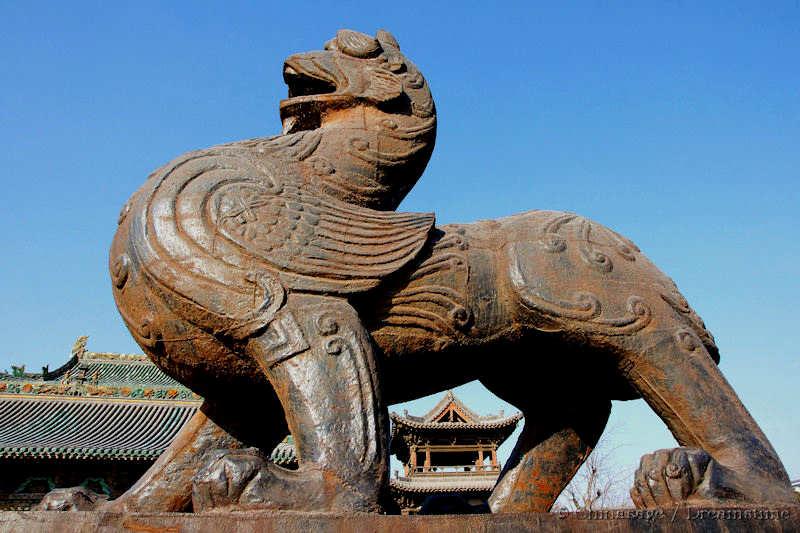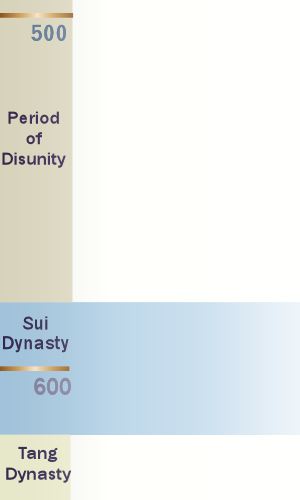Sui Dynasty 隋朝 581 - 618

By contrast to the many accomplishments of the Han dynasty the period from 220 to 589 was one of disunity and turmoil. It was Yang Jian (541-604) an official of the Northern Zhou kingdom who established the first re-unification of China - the Sui dynasty in 581. He reigned with the title Wendi Literary Emperor and started to rebuild a country torn by division. He used his strong Buddhist views to justify conquest on the basis of defending the Buddhist faith. He was frugal and did much to alleviate the sufferings of the poor. He re-united the northern and southern halves of the country in 589 founding a new capital at Daxing 大兴 now named Xi'an. Recruitment to the civil service required passing tough examinations in law and Confucian philosophy so that appointments were again made on merit rather than patronage. Each province was ordered to put forward their students of outstanding talent to take the exams.
Administration was instituted under the ancient ‘Three Administrators’ model (secretariat, privy council and cabinet) and Six Ministries following the model of the Qin-Han dynastic period. The ruling family were from the Xianbei ➚ tribe rather than Han Chinese although they soon took to Chinese culture. Many of the private armies that had fueled the incessant warfare between kingdoms were disbanded. Large construction projects were initiated such as the building of the Grand Canal. This canal enabled grain (mainly rice) from the southern provinces to be safely transported to the north in vast quantities. Another large engineering project was the strengthening of the Great Wall. Large state granaries were built and filled to give a reliable food supply for the burgeoning population.
News of the Chinese reunification reached the Byzantine Empire. Theophylact Simocatta ➚ recorded how the Sui had conquered the south and was a great nation and so limited contact between east and west was re-established.


Decline of the Sui dynasty
Wendi's successor Emperor Yangdi frittered away the goodwill towards his father with extremely expensive projects for his own pleasure such as the rebuilding of the city of Luoyang on an epic scale. It contained parkland of 60 sq miles [155 sq kms] with silk flowers attached to the trees in winter.
Economic development from the printing of books and manufacture of porcelain made China a prosperous nation again. At this time China was by far the most powerful and populous Asian power with over 46 million people. Yangdi's expensive military campaigns to subjugate the Korean peninsula brought about the downfall of the dynasty. Increased taxes were raised to pay for the Korean campaign and a disastrous Yellow River flood led to unrest and then to revolt. One of these rebel leaders went on to found the Tang dynasty in 618.

Strong historical parallels exist between the Qin and the Sui dynasties, both were short-lived and both instituted new unified systems under brutal rule. They were both followed by long periods of relative peace and prosperity: the Han and Tang respectively. Many people feel this pattern has repeated itself with Mao Zedong's rebuilding of China followed by another period of peace and prosperity.